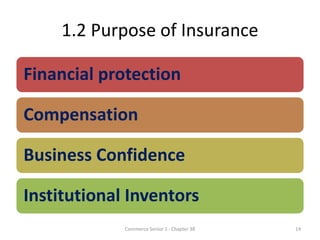The 45-Second Trick For Pacific Prime
The 45-Second Trick For Pacific Prime
Blog Article
The Of Pacific Prime
Table of ContentsWhat Does Pacific Prime Mean?Pacific Prime - TruthsSome Known Incorrect Statements About Pacific Prime Some Known Details About Pacific Prime Rumored Buzz on Pacific Prime

This is due to the fact that the information were gathered for a duration of solid economic efficiency. Of the estimated 42 million people that were without insurance, just about concerning 420,000 (about 1 percent) were under 65 years of age, the age at which most Americans end up being qualified for Medicare; 32 million were grownups in between ages 18 and 65, about 19 percent of all adults in this age; and 10 million were youngsters under 18 years of age, regarding 13.9 percent of all youngsters (Mills, 2000).
These estimates of the variety of persons uninsured are produced from the yearly March Supplement to the Current Population Survey (CPS), conducted by the Census Bureau. Unless otherwise noted, national quotes of individuals without medical insurance and percentages of the populace with various kinds of protection are based upon the CPS, one of the most extensively made use of source of quotes of insurance policy coverage and uninsurance rates.
Little Known Questions About Pacific Prime.

Still, the CPS is specifically valuable due to the fact that it creates annual estimates reasonably quickly, reporting the previous year's insurance policy coverage estimates each September, and because it is the basis for a regular collection of price quotes for more than two decades, permitting analysis of patterns in insurance coverage gradually. For these reasons, along with the extensive usage of the CPS in other researches of insurance policy protection that exist in this record, we depend on CPS estimates, with limitations kept in mind.

The estimate of the variety of uninsured individuals expands when a populace's insurance coverage status is tracked for a number of years. Over a three-year period starting early in 1993, 72 million people, 29 percent of the united state population, lacked protection for a minimum of one month. Within a solitary year (1994 ), 53 million people experienced at the very least a month without insurance coverage (Bennefield, 1998a)
6 out of every ten without insurance adults are themselves utilized. Functioning does improve the likelihood that one and one's household members will certainly have insurance, it is not a warranty. Even members of families with 2 full-time wage income earners have practically a one-in-ten opportunity of being uninsured (9.1 percent without insurance rate) (Hoffman and Pohl, 2000).
What Does Pacific Prime Mean?
New immigrants make up a substantial proportion of people without medical insurance. One analysis has attributed a substantial part of the current growth in the dimension of the united state without insurance populace to immigrants that showed up in the nation between 1994 and 1998 (Camarota and Edwards, 2000). Recent immigrants (those who involved the United States within the previous four years) do have a high price of being uninsured (46 percent), but they and their kids represent simply 6 percent of those without insurance policy nationally (Holahan et al., 2001).
The partnership between health and wellness insurance and access to care is well established, as recorded later on in this chapter. The relationship between health insurance coverage and wellness results is neither direct neither straightforward, a substantial professional and health and wellness solutions research literary works web links health insurance protection to better access to care, far better quality, and improved individual and populace health and wellness read what he said standing.
Degrees of evaluation for examining the impacts of uninsurance. It focuses specifically on those without any type of wellness insurance coverage for any kind of length of time.
Pacific Prime Things To Know Before You Buy
The troubles faced by the underinsured are in some aspects similar to those faced by the uninsured, although they are normally less serious. group insurance plans. Uninsurance and underinsurance, however, involve definitely different policy issues, and the approaches for addressing them may vary. Throughout this research and the 5 reports to adhere to, the main focus gets on individuals with no medical insurance and thus no assistance in spending for healthcare past what is readily available with charity and safeguard establishments
Medical insurance is a powerful aspect affecting receipt of treatment since both clients and physicians react to the out-of-pocket cost of services - https://www.find-us-here.com/businesses/Pacific-Prime-Agoura-Hills-California-USA/34031837/. Medical insurance, nonetheless, is neither essential neither adequate to get to medical solutions. The independent and direct effect of health and wellness insurance policy protection on access to health solutions is well developed.
Others will certainly obtain the wellness care they require also without wellness insurance policy, by paying for it expense or seeking it from companies that offer treatment totally free or at very subsidized rates. For still others, wellness insurance coverage alone does not ensure receipt of treatment as a result of various other nonfinancial obstacles, such as an absence of healthcare suppliers in their community, restricted access to transportation, illiteracy, or etymological and social differences.
All about Pacific Prime
Formal study concerning without insurance populaces in the USA dates to the late 1920s and early 1930s when the Board on the Expense of Medical Treatment generated a collection of records concerning funding physician workplace check outs and hospital stays. This problem came to be significant as the varieties of clinically indigent climbed up throughout the Great Clinical depression.
Report this page